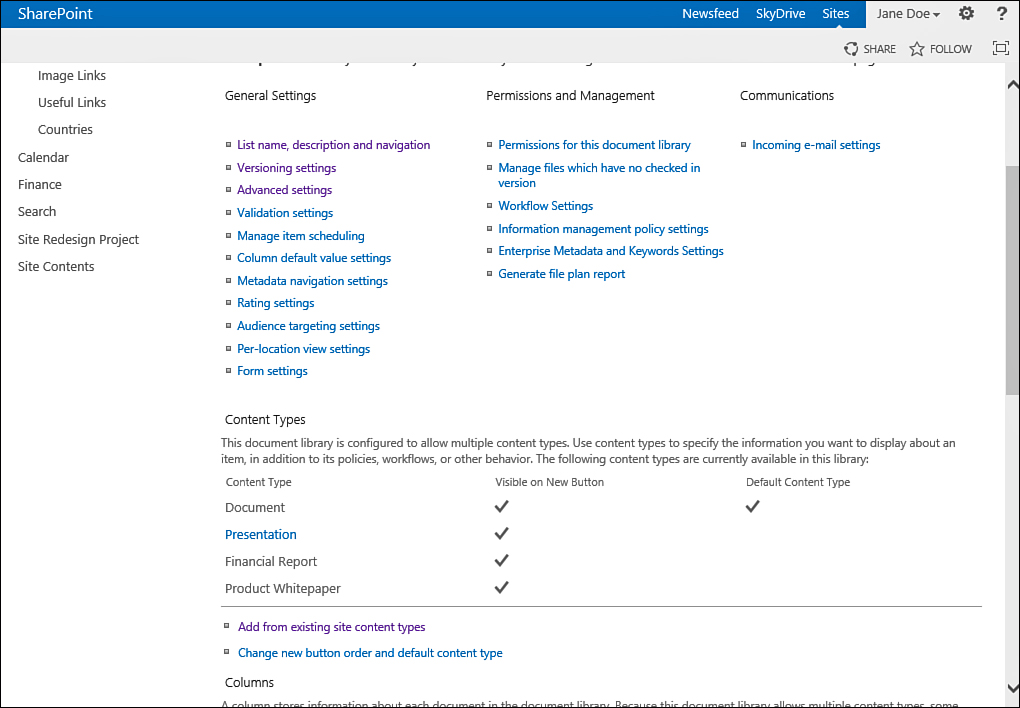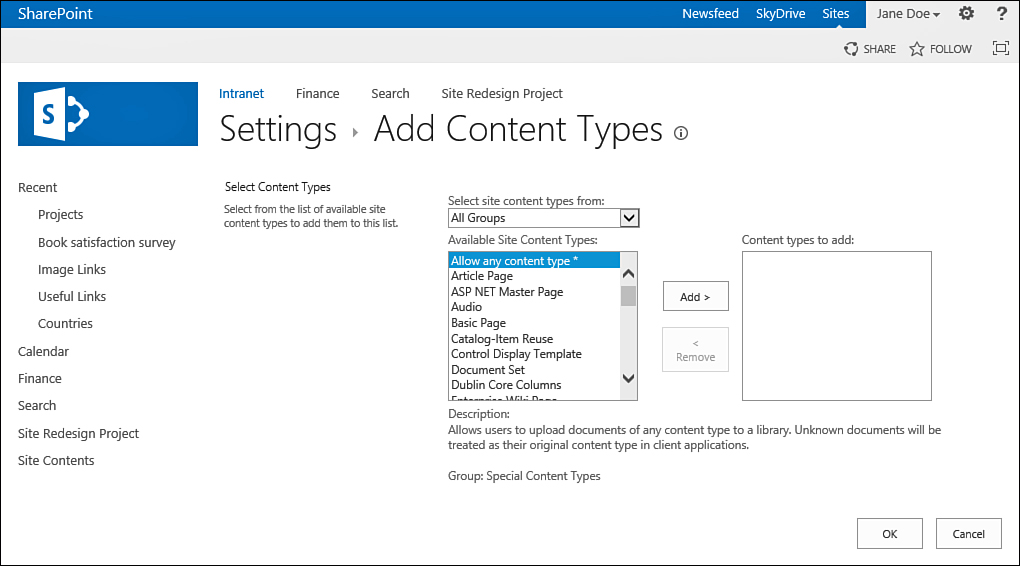Scenario/Problem: You want to add a content type that is defined in the site to a list or library. Using content types is a useful way to specify groups of properties for
files or list items. Content types can also specify a document template
for creation of a new document of that content type.
Solution:
To add a content type to a list or library, you first enable management
of content types in that list or library. To do so, you go to the list
or document library settings page by switching to the List ribbon or
Library ribbon and clicking the List Settings or Library Settings
button.
At the top of the page, in the General
Settings section, you click the Advanced Settings link. On the Advanced
Settings page, you select Yes under Allow Management of Content Types? and click OK at the bottom of the page.
You then return to the list or library settings page, which now has a section for content types (see Figure1).

FIGURE 1 The Content Types section appears only if content types are enabled for the list or library.
To add a content type, you click the Add from
Existing Site Content Types link in the Content Types section. The
content type selection page appears, enabling you to select one or more
content types to add to the list (see Figure 2).

FIGURE 2 The Add Content Types page.
On this page, the available content types
appear in the box on the left. You select the one you want and click the
Add button to move it to the box on the right (which shows the types
you selected). If you want to remove a content type you added by
mistake, you select it from the box on the right and click the Remove
button.
When you are finished selecting all the
content types you want for the list or document library, you click OK.
The resulting list or library settings page shows the list of content
types available in the list or library.